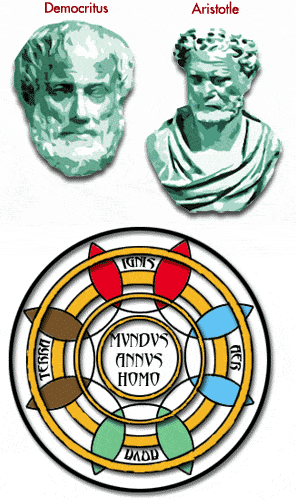|
|
Atomic Basics :In the Beginning |
|
Today we know quite a bit about atoms. But how did we ever know about atoms in the first place? The earliest known concept of the atom came from the Greek philosopher/scientist Democritus between 460 and 370 BCE. Democritus thought of the world as being composed of very tiny "uncuttable" particles, which he called "atomoz" or atoms. These tiny, invisible particles were thought to be separated by voids -- empty space. He explained differences in materials as caused by differences in the sizes of the particles and the amount of empty space between them. The ideas of Democritus provided a good foundation for the development of modern atomic theory. After the death of Democritus, however, the great philosopher Aristotle (384-322 BCE) argued persuasively against the concept of atoms. Aristotle thought the earth was composed of matter, which he believed was made up of four elements: earth, air, fire, and water. He explained the differences in different types of matter as arising from the proportion, form, and qualities of the four basic elements that each type of matter contained. Aristotle's concept of matter was very different from that of today's chemists. For a long time, Aristotle's ideas about matter held sway in the Western world. So how did scientists get back to the idea of atoms? Read about the modern concept of the atom.
|
 Alchemical illustration of the four elements |
|||
| Next: The Atom |